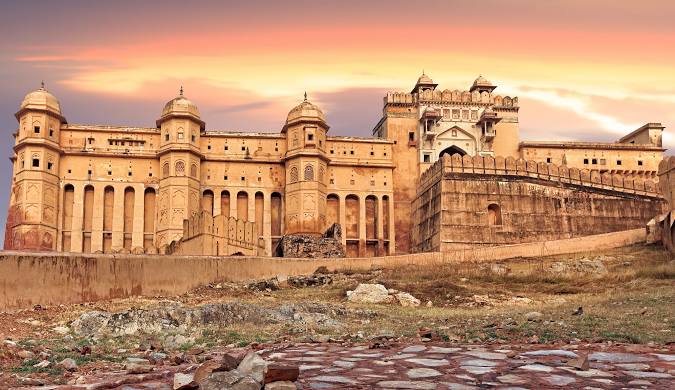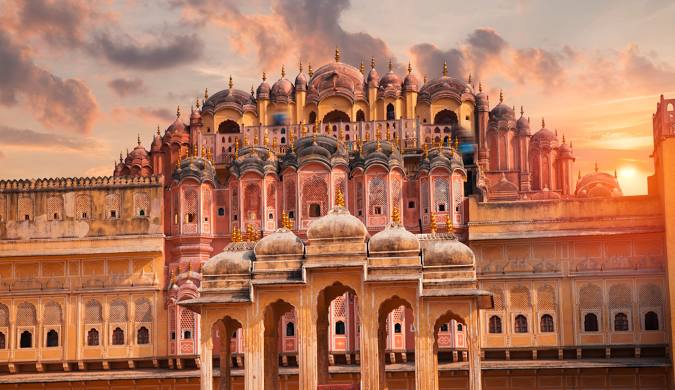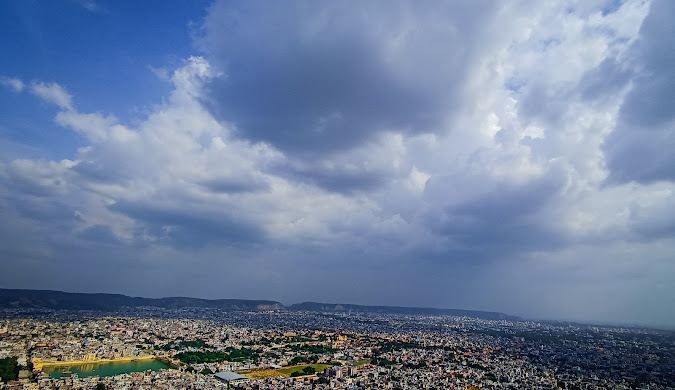When we think of Rajasthan, images of the majestic Maharajas and their princely kingdoms immediately come to mind. This enchanting land, situated on the fringes of the Thar desert, is where camels leave their imprints on the sandy terrain and tales of ancient grandeur travel from village to village.
Rajasthan is a vibrant and captivating state where regal traditions and splendor merge with a kaleidoscope of colors that contrast against the vast desert backdrop. It boasts an extraordinary diversity that encompasses its people, traditions, cultures, rituals, music, dialects, cuisine, and even its geographical features.
Tourist attractions in Rajasthan:
Within its borders lie India's most remarkable attractions, with impregnable forts, magnificent havelis, and a wealth of customs and traditions that are unparalleled. Rajasthan is a destination that captivates the hearts of tourists from around the globe, offering them the India of their dreams. It is a realization of the collective imagination, with Maharajas, elephants, camels, palaces, peacocks, and the mesmerizing cities of Jodhpur, Jaipur, and Jaisalmer, which are affectionately known as the blue city, the pink city, and the golden city respectively. These cities are an integral part of any traveler's unforgettable journey through Rajasthan.
Jodhpur, the second largest city in Rajasthan, is renowned for its blue-painted homes, which not only add a touch of beauty but also repel insects. In Jaipur, the dominant color of the palaces is a vibrant pink, while the buildings in Jaisalmer take on a golden hue during sunset.
When exploring Rajasthan, be sure to visit Bikaner, an ancient city that served as a crucial stop along the camel caravans' trade routes. Don't miss the opportunity to explore Fort Junagarh, a magnificent fortress that has never been conquered by foreign invaders.
Jaisalmer, a medieval city, was an essential destination for those traveling on the silk road and remains an outpost in the vast Thar desert. This fortified fortress is adorned with Jainist bastions and temples, as well as numerous havelis, which are ancient luxury residences that can be found throughout the state. Jaisalmer is also renowned for its thirst-quenching drinks and precious stones.
The desert landscape is a constant presence in Rajasthan, and from Jaisalmer, you can experience a truly unique night by staying in a tent in the open fields.
In Jodhpur, the city's grandeur shines through in attractions such as Fort Meherangarh, the Fort Museum, Jaswant Thada Mausoleum, and the famous Umaid Bhawan Palace Hotel. After exploring Jodhpur, continue your journey to Sardargarh, where you will be captivated by the ancient fort, which is considered one of the most beautiful and extravagant in all of Rajasthan.
Overlooking a collection of lakes, this location possesses a captivating ambiance, complete with enchanting palaces like the City Palace, a complex consisting of four regal palaces, which has captivated the hearts of countless global visitors. Standing proudly at the heart of one of the lakes is the Lake Palace, formerly the abode of royalty and now a lavish hotel. Jaipur, the vibrant capital of Rajasthan, is an essential destination, boasting the stunning Amber Fort, which commands a breathtaking view of the surrounding valley. Don't miss out on the City Palace in the city center, as well as the Palace of the Winds and the open-air Astronomical Observatory. A visit to Rajasthan would be incomplete without indulging in the flavors of tandoori cuisine, featuring oven-baked meats and fish, and exploring the vibrant markets and bazaar shops, offering a plethora of colorful fabrics used to create saris, spices, incense, and traditional puppets. Jaisalmer and Jodhpur are particularly renowned for their exquisite markets.








































































